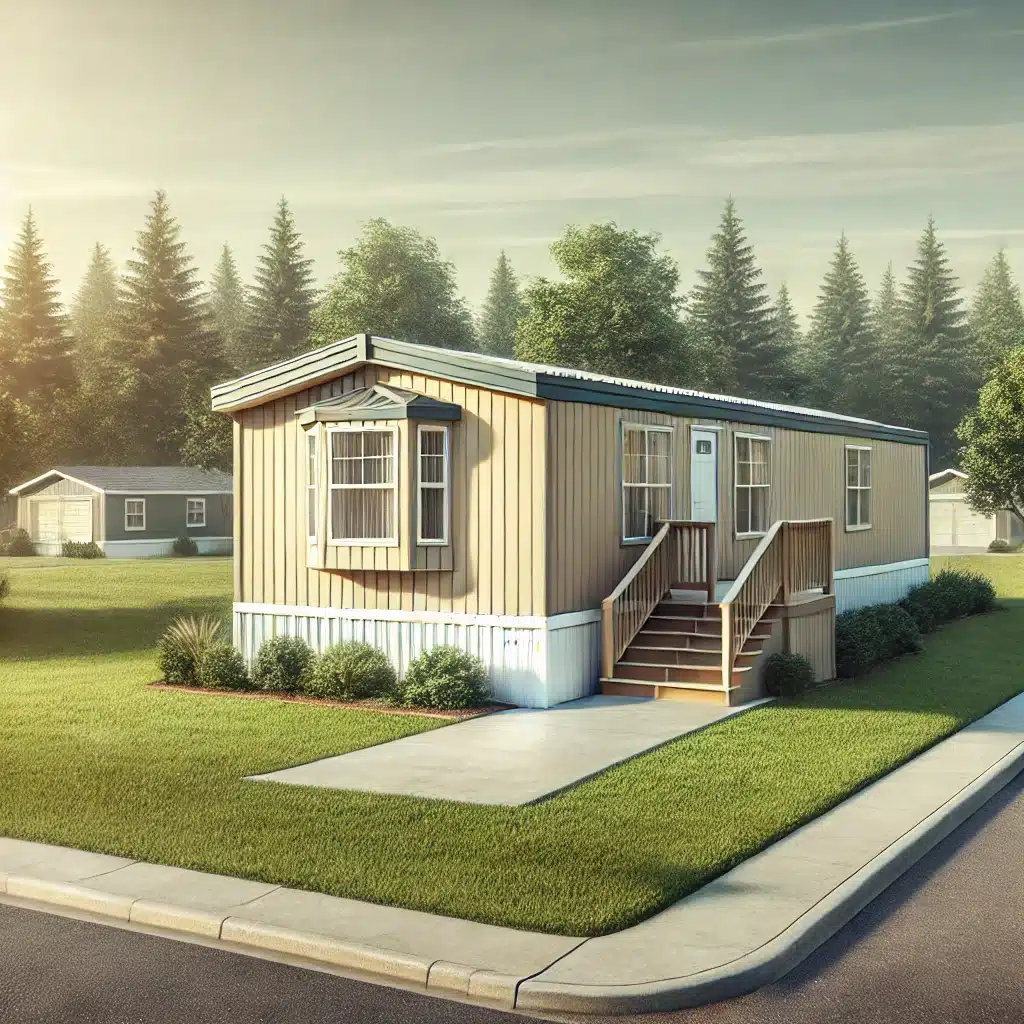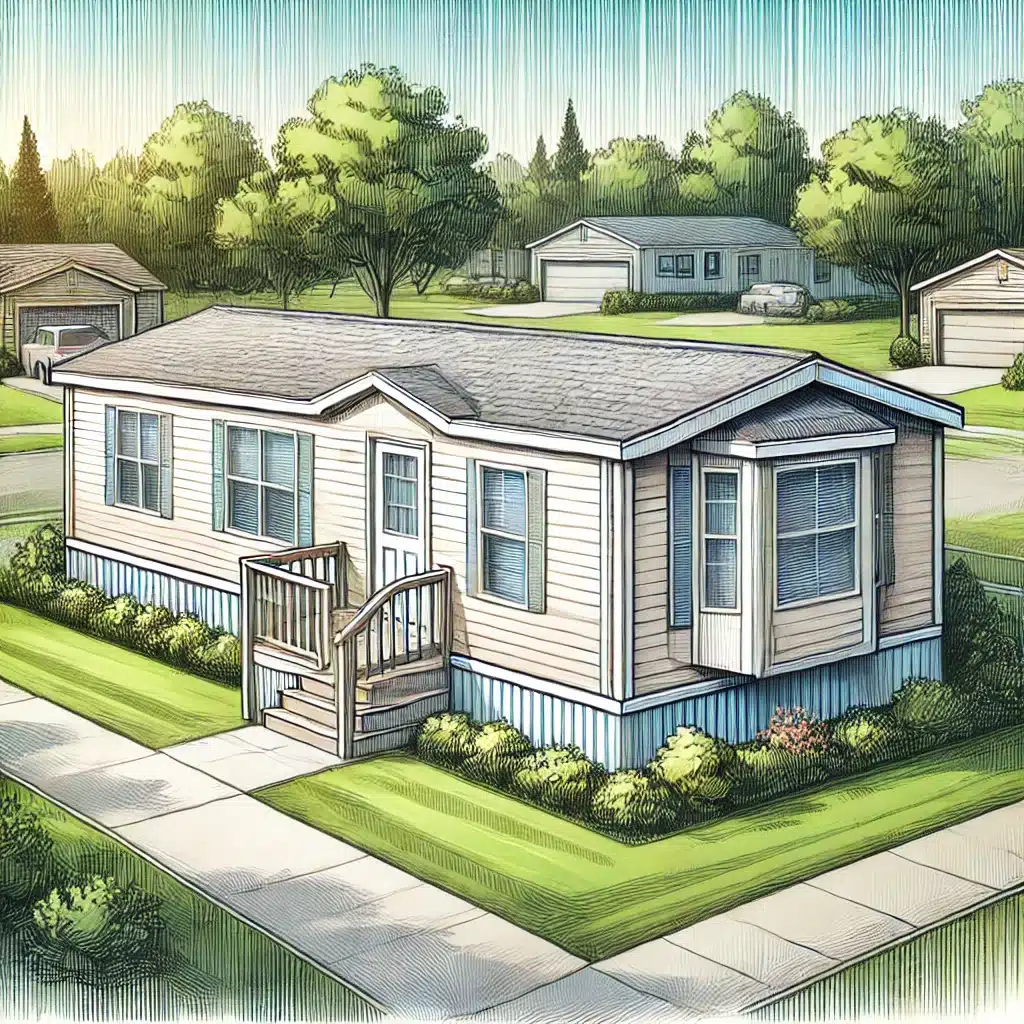When considering a mobile home, understanding its dimensions is crucial, especially when it comes to single wide models. The width of a single wide mobile home plays a significant role in determining the overall living space, layout possibilities, and how well it will fit on your property. Typically ranging from 14 to 18 feet in width, these homes offer a compact yet efficient living solution that is both affordable and versatile. In this article, we’ll explore the standard dimensions, factors influencing these measurements, and what to consider before purchasing a single wide mobile home.
What is a Single Wide Mobile Home?

A single wide mobile home is a type of prefabricated housing unit that is factory-built and transported to its final location. These homes are constructed on a single steel chassis and are designed to be narrower than double wide or multi-section mobile homes, making them easier to transport. Single wide homes typically have a rectangular shape, and their compact size is ideal for small families, singles, or couples who prefer a more manageable living space.
Comparison with Other Mobile Homes
Compared to double wide mobile homes, which are assembled from two separate sections, single wide mobile homes are built as a single, continuous unit. This makes them more affordable and easier to move, but they offer less living space and fewer customization options. Double wides, on the other hand, provide more expansive interiors and the possibility of more complex layouts, but they are more expensive and require larger plots of land.
Suitability and Popularity
Single wide mobile homes are popular in rural areas, small towns, and mobile home parks due to their lower cost and ease of installation. They are particularly appealing to those who need a temporary or semi-permanent housing solution. Additionally, because they occupy less land, single wide homes are often the choice for those who wish to maximize the use of a small lot or prefer minimal upkeep. Despite their smaller size, these homes can be equipped with modern amenities and stylish finishes, making them a viable option for many homeowners.
How Wide is a Typical Single Wide Mobile Home?
Standard Width Measurements
The width of a typical single wide mobile home ranges from 14 to 18 feet. This standard size is determined by transportation regulations and manufacturing practices, which aim to balance livable space with the ability to move the home on public roads. The width is designed to allow the home to be transported without requiring special permits in most areas, making it more convenient for buyers.
Length and Overall Dimensions
In addition to their width, single wide mobile homes can vary in length from 40 to 80 feet. This combination of width and length determines the overall square footage of the home, which typically ranges from 400 to 1,300 square feet. For example, a home that is 14 feet wide and 66 feet long offers about 924 square feet of living space, while a larger model that is 16 feet wide and 76 feet long provides around 1,216 square feet.
Impact of Width on Living Space
The width of a single wide mobile home significantly impacts its interior layout and the feel of the living space. A wider home allows for more spacious rooms, wider hallways, and a more open floor plan. In contrast, narrower homes may have more compact layouts with limited room sizes, which could affect the overall comfort and functionality of the space. However, even within these constraints, manufacturers have developed creative designs that maximize the use of available space.
What are the Common Sizes of Single Wide Mobile Homes?
Typical Size Ranges
Single wide mobile homes come in a variety of sizes to suit different needs and preferences. The most common sizes range from 14×40 feet to 16×76 feet, providing different levels of living space and room configurations. Smaller models, such as the 14×40 foot home, are ideal for singles or couples, offering a compact and efficient living space. Larger models, like the 16×76 foot home, can comfortably accommodate a small family, providing multiple bedrooms and bathrooms.
Examples of Common Models
Some popular models of single wide mobile homes include:
- 14×66 ft: This size is popular for its balance of affordability and space, offering approximately 924 square feet, typically with 2-3 bedrooms and 1-2 bathrooms.
- 16×76 ft: One of the largest single wide options, this model provides over 1,200 square feet of living space, often featuring 3 bedrooms and 2 bathrooms, making it suitable for a family.
- 14×40 ft: This smaller model offers around 560 square feet, usually with 1 bedroom and 1 bathroom, perfect for a single occupant or a couple.
Customization and Variations
While standard sizes are widely available, some manufacturers offer customization options to better meet the needs of individual buyers. This could include adjustments to the length, changes in the interior layout, or upgrades to the finishes and fixtures. These variations allow buyers to personalize their home while staying within the typical width constraints of a single wide mobile home.
What Factors Influence the Width of a Single Wide Mobile Home?
Manufacturer Standards
The width of a single wide mobile home is largely determined by the standards set by the manufacturer. These standards are influenced by the need to balance livable space with transportation and regulatory requirements. Most manufacturers adhere to the common width range of 14 to 18 feet, but there can be slight variations based on design preferences and regional market demands.
Transportation Regulations
Transportation regulations play a crucial role in determining the width of a single wide mobile home. In most states, the maximum width for transportable structures without requiring special permits is 18 feet. This regulation ensures that the home can be safely transported on highways and roads without causing disruptions or requiring escort vehicles. Homes wider than this limit would require special permits and additional logistics, making them less convenient for buyers.
Customization and Buyer Preferences
While the standard width of single wide mobile homes is fairly consistent, some buyers may seek customization to suit their specific needs. Manufacturers may offer options to slightly increase or decrease the width within the allowable range, depending on the intended use of the home or specific site requirements. However, such customizations are usually limited due to the need to comply with transportation laws and maintain structural integrity.
How Does the Width of a Single Wide Mobile Home Affect its Interior Layout?
Interior Space and Room Configuration
The width of a single wide mobile home directly impacts the interior space and how rooms are configured. In homes with a width of 14 feet, the layout is typically more compact, with narrower rooms and hallways. As the width increases to 16 or 18 feet, there is more flexibility in room sizes and configurations, allowing for wider living areas, larger bedrooms, and more spacious kitchens and bathrooms.
Open Floor Plans vs. Traditional Layouts
Many modern single wide mobile homes feature open floor plans, where the living room, dining area, and kitchen are combined into a single open space. This design maximizes the perceived space, making the home feel larger and more airy. In contrast, traditional layouts may have more defined rooms and separate spaces, which can be beneficial for privacy but may make the home feel more compartmentalized. The choice between these layouts often depends on the width of the home and the buyer’s preferences.
Impact on Furnishing and Decor
The width of a single wide mobile home also affects how it can be furnished and decorated. Wider homes provide more options for arranging furniture, accommodating larger pieces, and creating distinct living areas. Narrower homes may require more careful planning to ensure that the space is used efficiently and that the home feels comfortable rather than cramped. This is especially important in the kitchen and living room areas, where space is often at a premium.
What are the Benefits and Drawbacks of a Single Wide Mobile Home Based on its Width?
Benefits of a Wider Single Wide Mobile Home
One of the primary benefits of a wider single wide mobile home is the increased living space it provides. Wider homes allow for more spacious rooms, better flow between areas, and a more comfortable living environment. They also offer greater flexibility in interior design and the ability to include features like larger kitchens, more storage space, and additional bedrooms or bathrooms. For families or individuals who value space and comfort, a wider single wide mobile home can be an excellent choice.
Drawbacks of a Narrower Single Wide Mobile Home
While narrower single wide mobile homes are more affordable and easier to transport, they come with certain drawbacks. The most significant of these is the limited living space, which can make the home feel cramped, especially if there are multiple occupants. Additionally, the smaller width may restrict the types of furniture and appliances that can be used, as well as the overall design options. This can make it challenging to create a comfortable and functional living environment, particularly in key areas like the kitchen and living room.
Cost Considerations
The width of a single wide mobile home can also affect its cost. Generally, wider homes are more expensive due to the additional materials required and the increased complexity of the design. However, they may also offer better value for money in terms of livable space and comfort. Buyers need to weigh the benefits of extra width against their budget and space requirements, considering both the upfront cost and the long-term livability of the home.
Why is it Important to Understand the Width of a Single Wide Mobile Home Before Purchasing?
Space Planning and Lot Requirements
Understanding the width of a single wide mobile home is crucial for space planning and ensuring that the home will fit on the intended lot. The width affects not only the placement of the home but also the available yard space, the layout of driveways and walkways, and compliance with local zoning regulations. Buyers should carefully measure their lot and consider how the home will fit into the overall property layout, taking into account any setbacks, utility connections, and landscaping plans.
Resale Value and Long-Term Considerations
The width of a single wide mobile home can also influence its resale value and long-term appeal. Homes with a more generous width tend to be more desirable, as they offer more comfortable living spaces and greater flexibility in terms of interior design. This can make them easier to sell in the future, as they may appeal to a wider range of buyers. Conversely, narrower homes may have a more limited market, as potential buyers may be concerned about space constraints.
Ensuring a Good Fit for Your Lifestyle
Ultimately, the width of a single wide mobile home should be considered in the context of your lifestyle and needs. If you require more space for family living, entertaining guests#### Layout Planning and Utility Connections
The width of a single wide mobile home affects not just the interior but also how it fits within a property. It’s essential to plan for the home’s placement, ensuring enough space for surrounding structures, utilities, and amenities like driveways or gardens. Understanding the width can help you align the home properly, considering setback requirements and zoning laws.
Finalizing the Purchase
Before purchasing a single wide mobile home, understanding its width is crucial for making an informed decision. This knowledge ensures that the home meets your space needs and fits well within your budget, providing long-term comfort and satisfaction.
FAQs about the Width of Single Wide Mobile Homes
Can a single wide mobile home be customized in width?
Yes, some manufacturers offer customization options, allowing slight modifications to the width of a single wide mobile home. However, these changes are often limited by transportation regulations and structural requirements, so the custom width usually stays within the standard range of 14 to 18 feet.
How does the width affect the overall cost of the home?
The width of a single wide mobile home directly impacts its cost. Wider homes typically use more materials and may include more features, resulting in a higher price. However, this additional cost often translates into better livability and more comfortable space, making it a worthwhile investment for those who need more room.
What should I consider regarding the width when planning to place a mobile home on a property?
When planning to place a single wide mobile home on a property, consider the available lot space, zoning regulations, and utility connections. Ensure that the width of the home leaves enough room for additional structures, landscaping, and required setbacks from property lines or neighboring structures.
Where Can I Find More Information on Single Wide Mobile Home Sizes?
For more detailed information on single wide mobile home sizes and purchasing options, you can explore resources from manufacturers and mobile home dealers. Websites like Pennsylvania Factory Direct and Home Nation offer comprehensive guides and model comparisons to help you make an informed decision. These resources can provide you with detailed specifications, customization options, and advice on choosing the right home for your needs.




